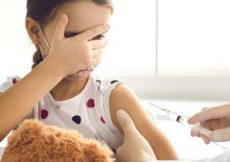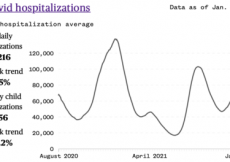In a recent study published in the United States Centers for Disease Control and Prevention (CDC) Morbidity and Mortality Weekly Report, researchers determined the characteristics and clinical outcomes of coronavirus disease 2019 (COVID-19) in children and adolescents 18 years or younger.
Study: Characteristics and Clinical Outcomes of Children and Adolescents Aged <18 Years Hospitalized with COVID-19 — Six Hospitals, United States, July–August 2021. Image Credit: FarmVeld / Shutterstock.com
Background
In July 2021, severe acute respiratory syndrome coronavirus 2 (SARS-CoV-2) infections increased with the arrival of the Delta (B.1.617.2) variant. The emergence of Delta variant infections peaked in September 2021, along with increased hospitalization rates in children 18 years or younger. However, the clinical signs and symptoms, illness course, and factors contributing to hospitalizations in pediatric patients are still not well understood.
About the study
In the present study, researchers reviewed the medical records of children and adolescents hospitalized with COVID-19 from six children’s hospitals in the United States between July and August 2021. A total of 915 pediatric patients were identified, among which 713 (77.9%) had acute COVID-19, 177 (19.3%) had asymptomatic or mild COVID-19, and 25 (2.7%) had multisystem inflammatory syndrome in children (MIS-C).
Demographic characteristics
The researchers determined the age distribution among the 713 hospitalized pediatric patients and found that 24.7% of patients were under one year, 17.1% were between the ages of one and four, 20.1% were between the ages of five and 11 years, and 38.1% were aged between 12-17 years.
Among the 713 hospitalized COVID-19 patients, 373 (52.3%) were male, 210 (29.5%) were non-Hispanic White, 202 (28.3%) were non-Hispanic Black or African American, and 211 (29.6%) were Hispanic.
Clinical characteristics and outcomes
About 83% of the patients aged between five and 11 years of age and 88% of patients aged between 12 and 17 years had one or more underlying medical conditions. The number of patients admitted to the intensive care unit (ICU) with any underlying medical conditions was higher (34.7%) as compared to those without any underlying condition (18.5%).
About 32.4% had obesity and required a longer duration of care as compared to those without obesity. Furthermore, an estimated 33.9% of patients five years of age or younger had viral co-infection.
Among the 713 COVID-19 hospitalized patients, 385 (54%) required oxygen support, 210 (29.5%) were admitted to the ICU, eight received (1.1%) extracorporeal membrane oxygenation (ECMO), and 11 (1.5%) died. In the patients requiring respiratory support, 142 (36.9%) patients received high-flow nasal cannula, and 56 patients (14.5%) required invasive mechanical ventilation (IMV).
Compared with other age groups, adolescents between the ages of 12 and 17 were more likely to require ICU admission, oxygen support, and the most prolonged median duration of IMV (9.5 DAYS). In all age groups, the median hospital stay and median invasive mechanical ventilation (IMV) duration were three and seven days, respectively.
Many hospitalized COVID-19 patients had severe illnesses and viral co-infections. About 32.4% of the patients under the age of one and 36.1% of patients aged between the ages of one and four years had viral co-infection. Around 15.8% of viral co-infection was associated with the respiratory syncytial virus (RSV).
The 272 adolescents between the ages of 12 and 17 years were eligible for vaccination, among which 12 (4.4%) patients were partially vaccinated with a messenger ribonucleic acid (mRNA) COVID-19 vaccine, and only one (0.4%) was fully vaccinated during the hospitalization period, thereby indicating a low vaccination rate among them.
Limitations and conclusion
The current study had several limitations. Firstly, five of the six hospitals were located in the southern U.S. region, where the proportion of adolescents with obesity was higher, which might be the reason for increased obesity rates observed in the study population. Secondly, at the time of the study, adolescents aged 12–15 years had only been vaccine-eligible for 2–3 months, thus indicating the reason behind low vaccination rates.
Overall, the study findings indicate that underlying medical conditions and obesity are risk factors for COVID-19 in children and adolescents under the age of 18. The number of vaccinated individuals was also less, which indicates the need for vaccination and other prevention strategies for children five years and older to protect them from COVID-19, especially in those with underlying medical conditions.
Additionally, research and surveillance on viral co-infections with SARS-CoV-2 in pediatrics can help manage COVID-19 among this population.



































